If your garden is all sun and no shade, these plants will add vibrance to your space.
10 Full Sun Flowers That’ll Thrive
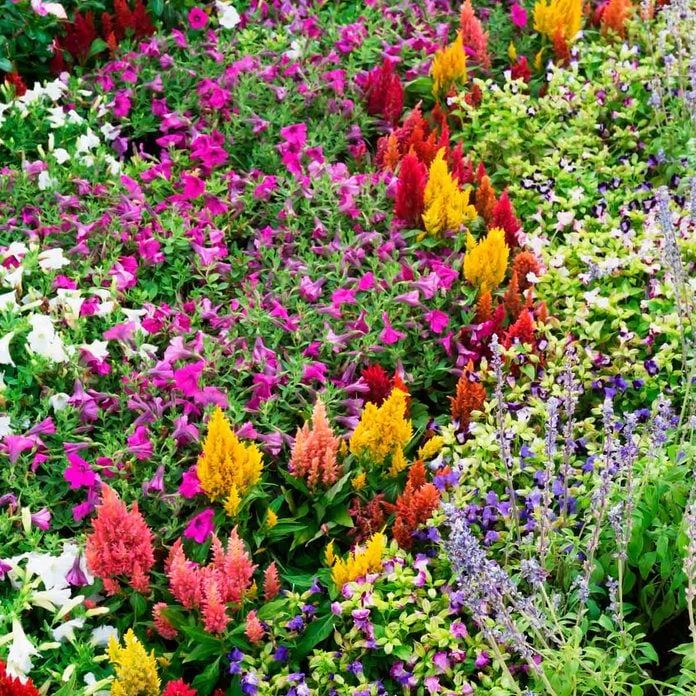
Full Sun Flowers For Your Garden
Sometimes you just need a sure thing, like easy plants for your garden. It goes without saying that the hardiest and healthiest flowers are those suited to your growing conditions. If you live somewhere with a lot of full sun, flowers that can stand up to it are a necessity.
To find out what planting zone you live in, refer to this chart from the USDA. Matching plants to your climate, soil, sunlight and moisture levels gives you the most success with the least effort. Native flowers are always a good place to start. They provide food for backyard wildlife like native birds and butterflies, and they’re already accustomed to your region. Also, check out these full sun perennials.
If you include some of these summer flowers in your garden planning, you’ll be able to say you have some of the toughest plants in America!
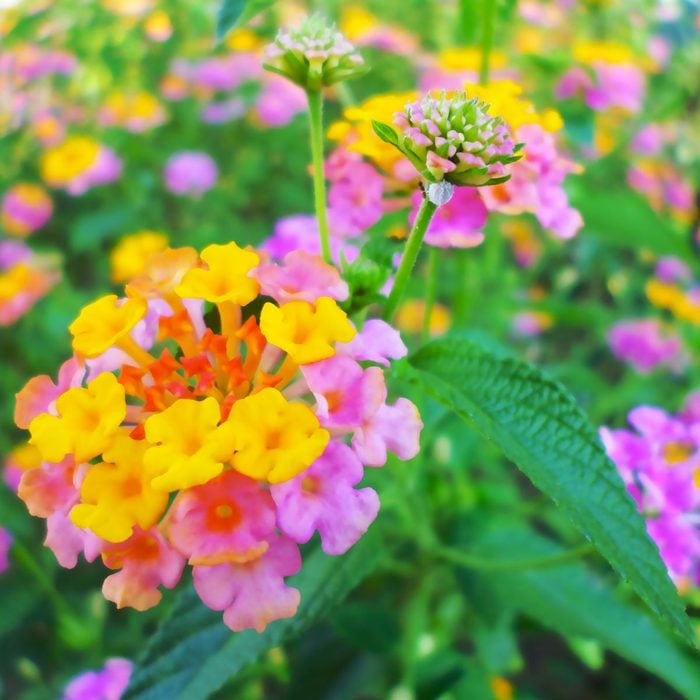
Lantana
These cheery flowers come in a variety of colors. They do best with at least six hours of direct sunlight per day. Some varieties feature gorgeous multi-colored blooms like the ones pictures here. Others are solid-colored. They handle heat well, too, and are a good choice for landscaping in hot weather.
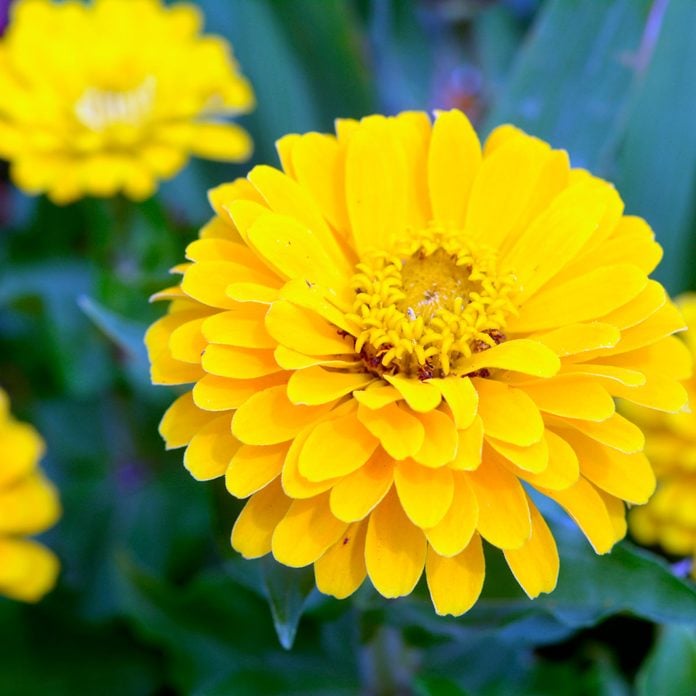
Zinnias
When these adaptable flowers get full sun, they can grow up to three feet high. However, they will also do well in shade. Zinnias also tolerate heat well, although some species are susceptible to mildew. Advances in breeding and hybridization have produced species and cultivars that are disease-resistant, performing well even in the muggy summers of the Southeast.
Zinnias are annuals, and many self-sow readily in the garden each year. Zinnias are a must-have in a butterfly garden, and some species attract hummingbirds as well. Because they’re annuals, they transform from seed to flower in record time and their blooms last all summer long!
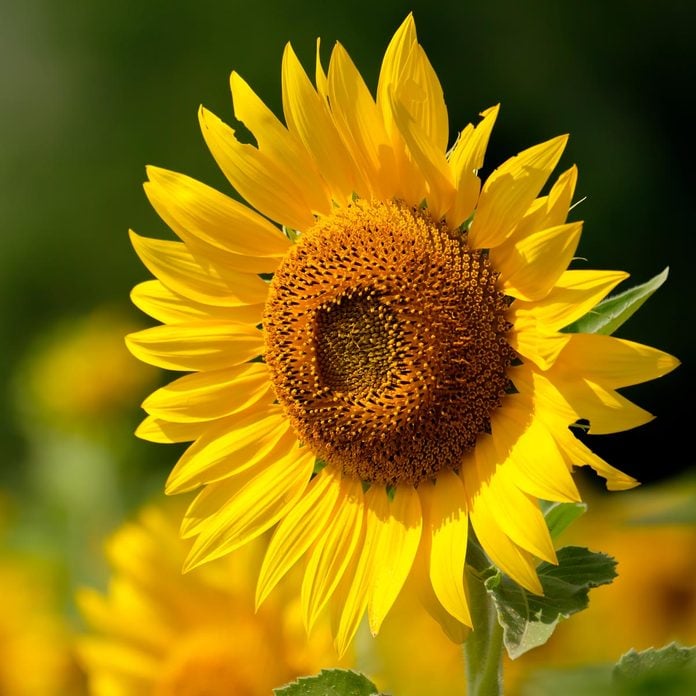
Sunflower
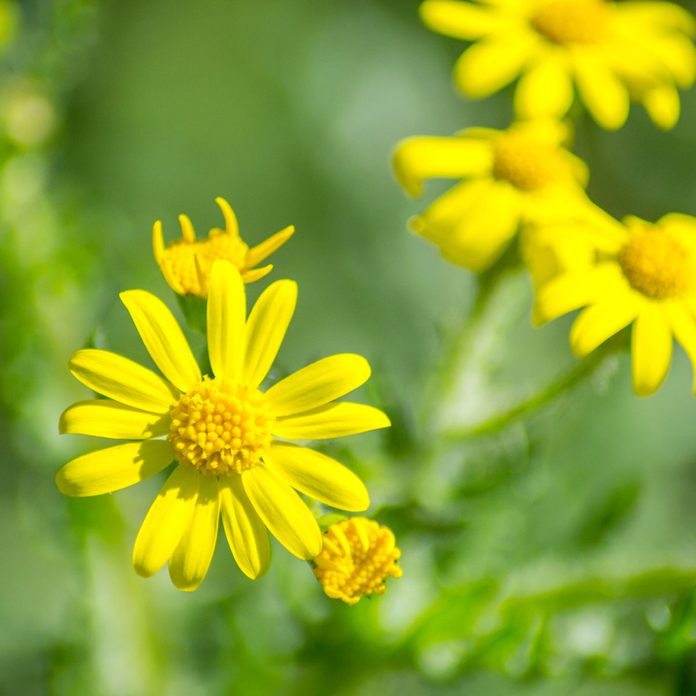
Dahlberg Daisy
Dahlberg daisies are native to south Texas and northern Mexico, so they love hot, dry conditions and don’t enjoy extended high humidity or soggy soils. Plant them in dry, well-drained soil and give them lots of sunshine. Once established, they’ll thrive for weeks on end without much rain.
They’re intolerant of frost or freezes, so start them inside from seed and transplant outdoors once winter has finally given up in your area. This low-growing, spreading plant looks best along borders or in hanging baskets, where folks can appreciate up close the little blooms and fragrant feathery foliage.
Some butterflies even use these flowers for nectar, so you might try them as edging in a sunny butterfly garden. Dress up your sunny patio and landscape with any of these dazzling annual flowers that thrive in the sun and heat.
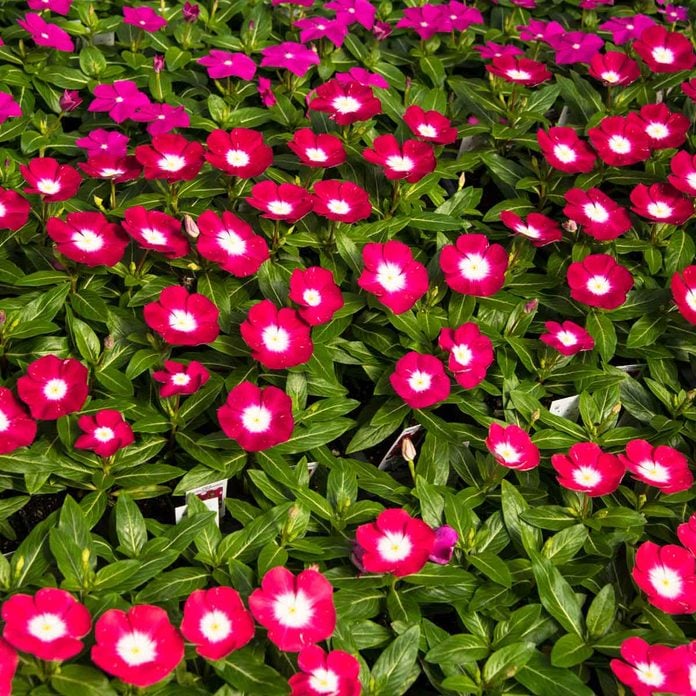
Annual Vinca
Annual vinca is a compact plant, growing to about 15 in. x 15 in. Multiple five-petaled blooms that appear continuously set off the shiny green leaves. Vinca is available in a range of shades including white, pink, red, purple, and lavender. Here’s our round-up of the best white flowers.
Vinca needs little maintenance and deadheading isn’t required. They do well in full sun to part shade, and can tolerate some drought, although they flower best with regular watering. Trailing vinca is wonderful for containers or as ground cover. Butterflies visit annual vinca for nectar, although it’s not their preferred garden plant.
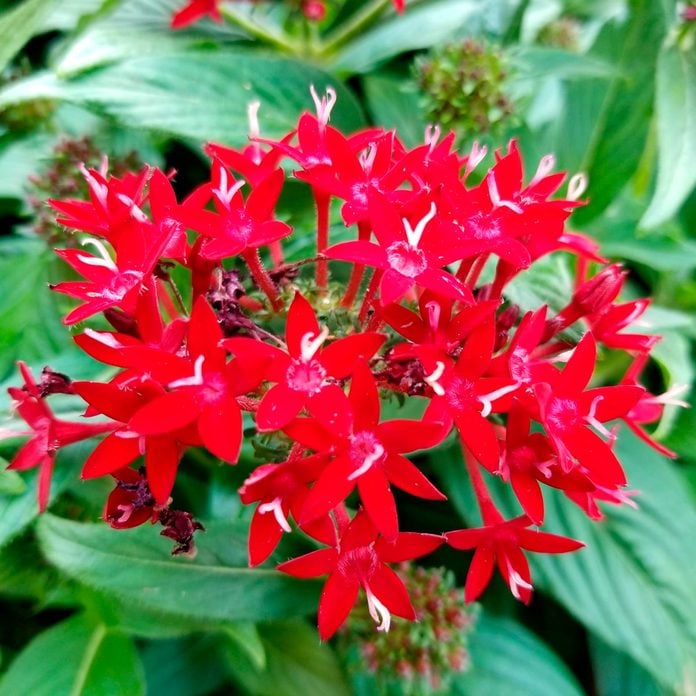
Pentas
In most of the country, pentas are grown as an annual, though you can overwinter them in zones without frost. They’re readily available in nurseries in most areas and easy to grow.
The clusters of tiny star-shaped flowers are laden with nectar, and butterflies of all sizes love to visit them. Grow pentas in full to part sun, and provide regular water especially as they establish.
They grow well both in the ground and in containers.
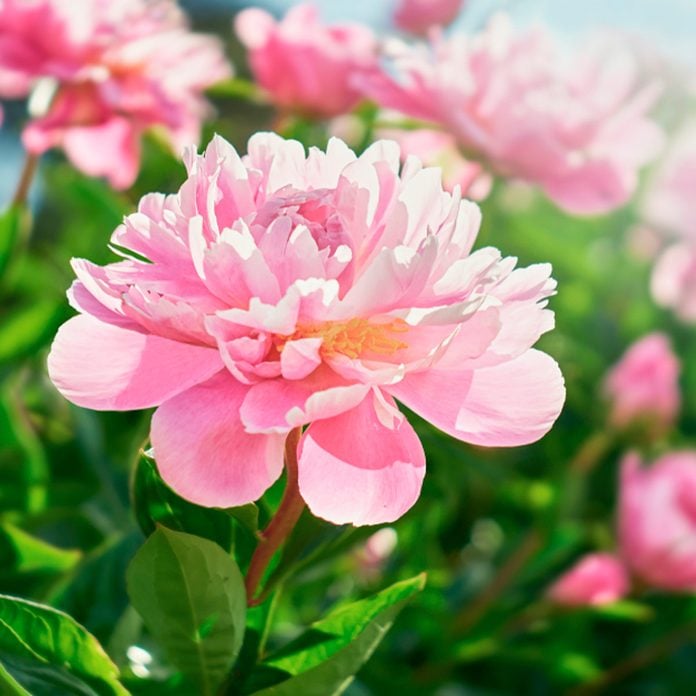
Peony
Peonies like sun. When you’re planting peonies be mindful of location. Avoid trees that will grow and shade them. With its green foliage and showy blooms, you wouldn’t think that the peony does well in a dry garden, but you’d be surprised.
And since the flowers are fragrant, it’s a popular choice as a cut flower as well. Peonies likes full sun or partial shade, and grow to a height and width of up to 35 inches. Another plus is that they are resistant to deer and rabbits.
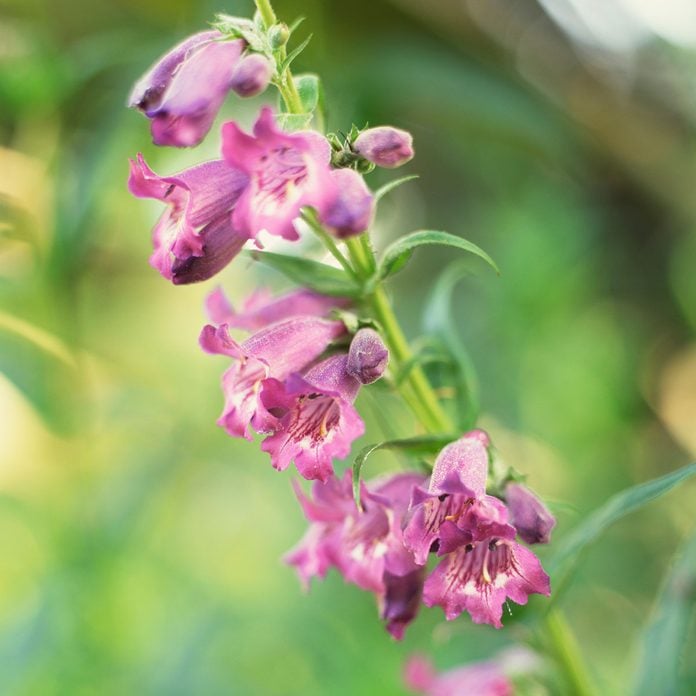
Beardtongue
Penstemon, also known as beardtongue, are a great addition to a drought tolerant garden with their flowering spikes that color the landscape in spring and summer. Each flowering spike consists of multiple blossoms ranging in color from pale pink, rose, magenta, purple and red depending on the species.
Besides adding beauty to the garden, hummingbirds are drawn to their tubular flower. The majority of penstemon species are tough and thrive on neglect. Their needs are few and they do best in drought tolerant gardens with well-drained soil, full sun to filtered shade, and supplemental water during the warm months of the year.
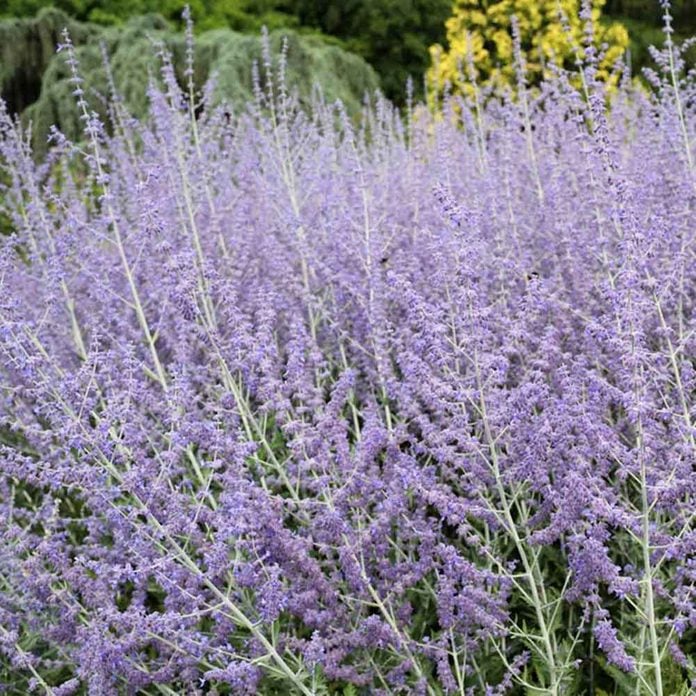
Russian Sage
The distinctive spiky shape of Russian sage with its lavender blue flowers stands alone in the garden. This small shrub is often treated as a perennial. Its silvery stems and leaves are fragrant, and its flowers can appear as early as late spring and all the way into early fall, depending on your zone. Bees, butterflies and hummingbirds are all attracted to this small shrub, but deer and rabbits are not. Check out our list of fragrance flowers for your garden.
Russian sage can be grown in a wide variety of climates all the way from Zone 3 to Zone 10. Because of its hardiness, it’s one of our favorite full sun flowers. In colder climates, it will die back to the ground only to reappear in spring. Those in warmer climates, Zone 8 and above, will enjoy this shrub all year long. Extremely drought tolerant, Russian sage needs well-drained neutral to slightly alkaline soil, full sun and hot summers to look its best.
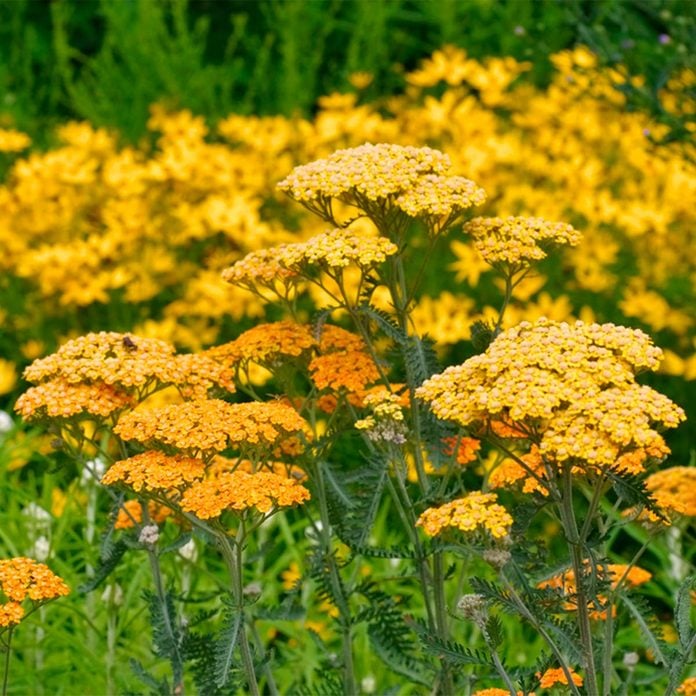
Fernleaf Yarrow
Fernleaf yarrow, or simply yarrow, is an easy perennial that grows in nearly any sunny situation, even with poor soil. This species forms a tall, bushy mound of fragrant ferny foliage, with huge clusters of golden-yellow flowers appearing on tall stems beginning in early summer. Outstanding for cutting, fresh or dried. Remove faded flowers regularly to promote continued blooming.